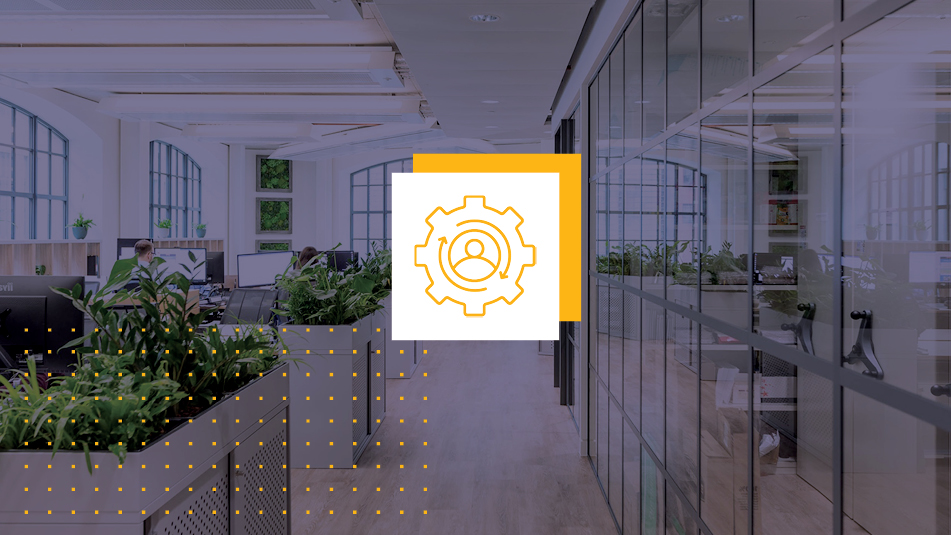Last month, CEO Jim Underhill appeared as a guest speaker at the Property Forum 2019 conference in Poland to discuss international commercial real estate (CRE) trends and other topics affecting the property market. The discussion explored the potential impacts of another global economic crisis, consequences of Brexit on the European Union and the growing coworking movement. With these and so many other factors influencing the global CRE market, it seems as though one hiccup could have very significant consequences for the entire property market. This domino effect like structure means as trusted advisors we must pay attention to the shifting sands that are now sending warning signs to all segments of the commercial space market. What are the major risk factors businesses should be worried about? Which sectors of the property market are over saturated? Which dormant sector has the greatest potential to be highly disruptive? Above all else, what is the property market afraid of?
Economic growth has slowed
Global economic growth is clearly decelerating. According to an October 2019 report from the International Monetary Fund (IMF), global growth is projected to come in at 3.0% for 2019, substantially down from last year’s estimated 3.6%, and 2017’s 3.8%. Perhaps the most fragile and important factor when it comes to the future of CRE, global economic instability could stall, delay or deter a company’s expansion plans altogether. The rising presence of trade wars combined with Brexit and other significant geopolitical events suggest political and economic uncertainty are set to increase in the near-term causing business leaders to consider deferring or cancelling any expansion plans they may have.
With the ongoing, and seemingly intensifying, trade war between the United States and China, the world’s two largest economies, global supply chains are in an extreme state of flux. To highlight, news of high-profile companies moving production out of China is just one example of shifting supply chains. A truism that may need repeating is the effect uncertainty has on businesses investment—and that’s never good.
Technology
The relentless advancement in new innovative products and services means every business leader is cognizant of new competitors appearing without warning. Disruptors, as they are often referenced, can be seen across a variety of industries. In financial services, we’ve seen the rise of fintech; the auto sector is shifting to electric vehicles (EV), artificial intelligence (AI) is spurring autonomous vehicles; and indeed, in our own backyard, the rise of PropTech and blockchain technologies are all creating seismic changes to almost every industry. Overarching the entire service sector is the move towards SaaS (Software as a Service), which looks set to upend every industry and every sector of the economy.
Mobile technology is also changing every industry and property is no exception. For example, within the office market, the rise of mobile technology is perhaps best highlighted by the exponential growth of flexible or shared-office space operators such as WeWork and International Workplace Group (IWG). A confluence of events—namely the rapid growth of technology, the “gig” economy and a higher degree of business uncertainty—are forcing business leaders to maximize flexibility, conserve capital and think twice before entering into a long-term lease commitment.
As property advisors, we partner with office and industrial occupiers to embrace technology that will allow us to articulate their business plans in their physical space. Across every segment of the economy, technology has become central to companies’ business plans in a bid to stay competitive and provide a superior product or service. At Cresa, we insert new technologies in everything we do. Our clients are demanding it, our professionals are demanding it and, frankly, the marketplace is demanding it.
Coworking and the Agile Workplace
You can’t talk about trends in CRE without acknowledging the coworking movement. It has been likened to a tsunami, crashing upon the shores of every office market in the world. Aside from the obvious flexibility it provides, the trend also serves as a sustainability practice doing more with existing resources. Restaurants and cafés who want to put their space to use during off hours may rent it out to startups as offices; retail stores are being repurposed to provide entrepreneurs a place to work and collaborate; and places once used for worship can now be seen hosting freelancers and other project based contractors. Even well-known companies such as Microsoft and Apple have turned to coworking to accommodate their workers and help meet their real estate needs. With a limited supply of space and more tenants looking to establish a presence in certain markets, coworking offers a valuable solution that both provides the product companies are looking for and flexibility with respect to what can be sizeable real estate costs. While coworking may not be for everyone, as many companies will prefer to own or lease their own real estate premises, the move towards flexible workspace is an undeniable trend now seen worldwide.
For companies across every industry, whether a small startup or a recognized Fortune 500, shifting work trends, generational gaps and the influx of technology are all acting to influence the workplace. This means real estate has shifted from a cost to a driver of value that has to be carefully managed and leveraged to produce superior results. How, then, can a company design its workplace to meet and respond to all of these aspects accordingly?
With coworking, remote workers and flexible office layouts, occupiers now need to understand how their space is being utilized. Companies are increasingly turning to data-driven research to inform the design of their workplaces. This information is intended to address everchanging workplace demands and attract and retain the best talent. Sensors and other emerging building technologies can help provide these insights which will then allow space to be used more efficient and productively. Occupiers need to adopt fit-out and furniture solutions that can evolve in a cost-effective manner and be as “future proof” as possible. This will require a move away from traditional, and often rigid, corporate layouts. By providing a physical environment that has the employee’s interests at heart, the workplace has the potential to promote purpose, engagement, collaboration and innovation, a winning formula for any enterprise.
What does it all mean?
There are many issues not touched on here including e-commerce, ridesharing, cyber-security, climate change and a rising shortage of talent to name a few. But what these topics, and many others, all have in common is the rapid change that is underway in so many parts of our lives—and geographies don’t seem to matter anymore. Singapore, Stockholm, Sydney and Seattle, are all seeing the same enormous changes. A never-ending period of disruption and unknowing is almost certainly the new norm. We believe all this disruption and change is also offering a tremendous amount of opportunity for individuals and businesses alike who are open to innovation, new ideas, and perhaps most importantly, have the capacity to change.


